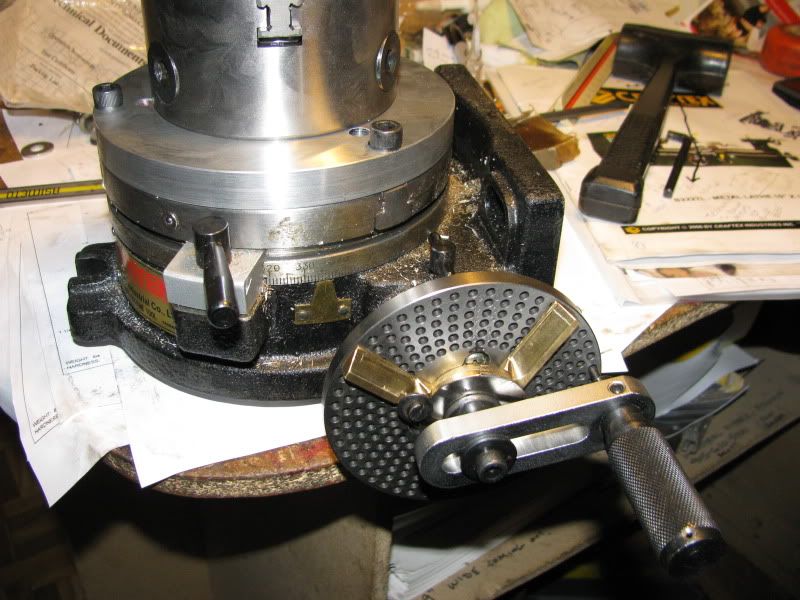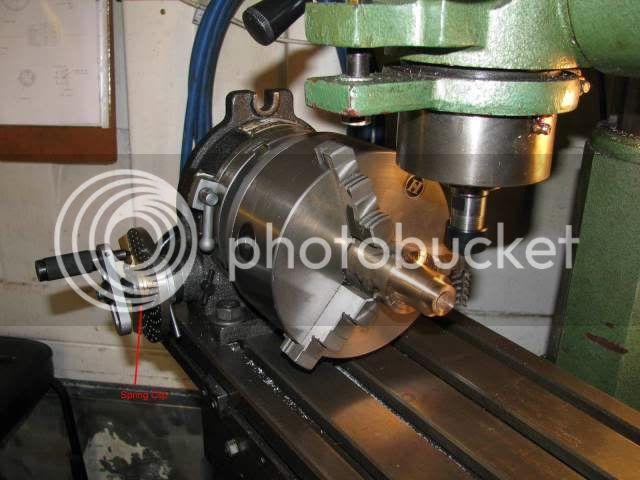Today I washed all the cosmoline gunk off my Divider plates which came with my rotary table (which I purchased 3 years ago). I followed the Chinglish instructions, and after slotting the holes in the divider plates so they would actually fit the bolt pattern in the rotary table (Thats a whole 'nuther story) I was able to assemble things okay. I am beginning to figure out how the divider plates are supposed to work---fortunately I am using the rotary table to cut an eithteen tooth gear, which means 5 full rotations of my handle to accomplish the 20 degrees between cutting positions, so I can use any of the divider plates. (Mine is a 90:1 gear reduction).----Now the question---Those brass arms (I think they are called "sectors") have a screw, which when tightened will lock the angle between the sector arms---However, the two arms (now locked at some angle) seem to rotate fairly freely on the center hub.---They shouldn't do that, should they?? If I am doing some exotic pattern that calls for X number of full rotations and then count how ever many additional holes in the divider plates to let my spring loaded handle pin drop into (Which I THINK is supposed to be located by one of the sector arms)---and the arms rotate out of position---then I'll end up dropping my spring loaded pin into the wrong hole. What am I not understanding here???---Brian







